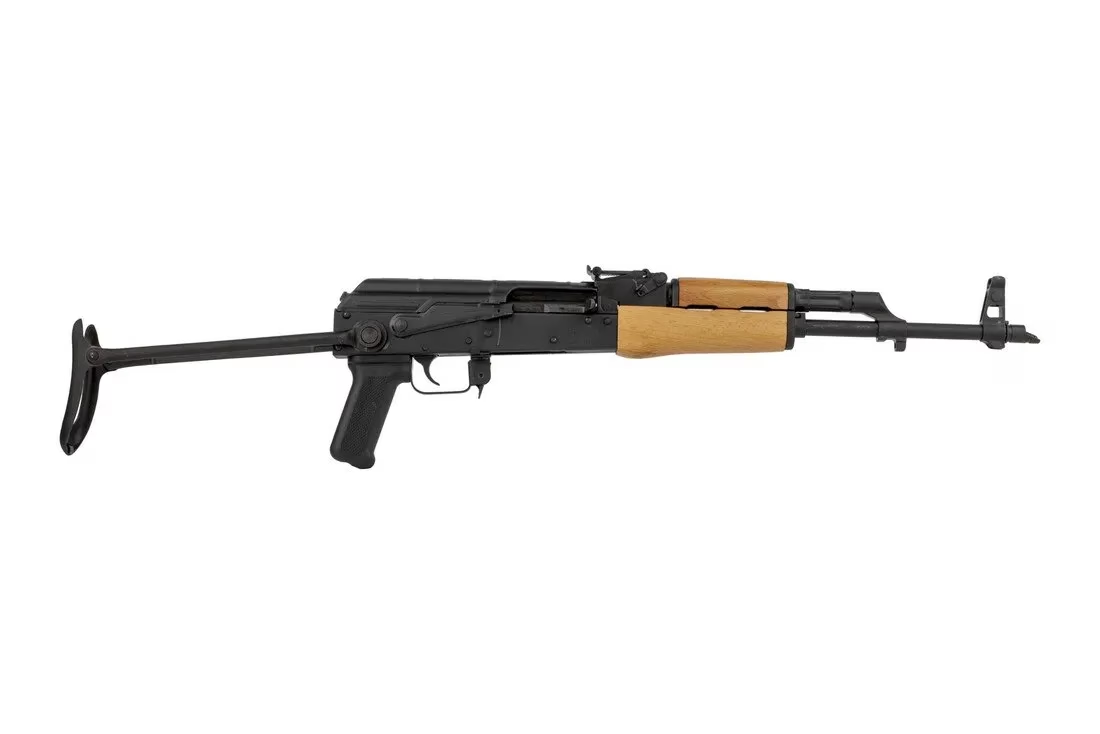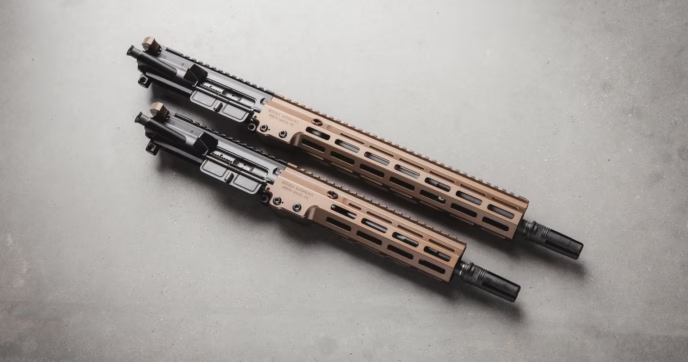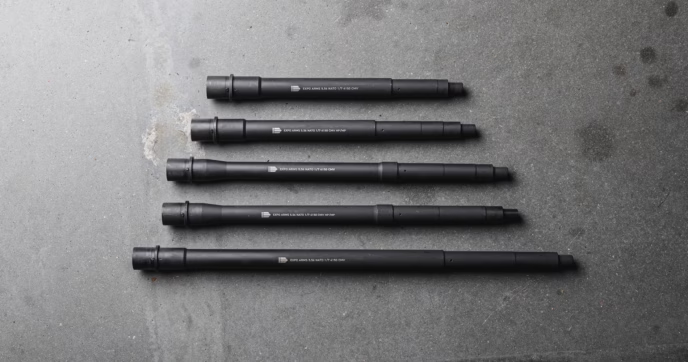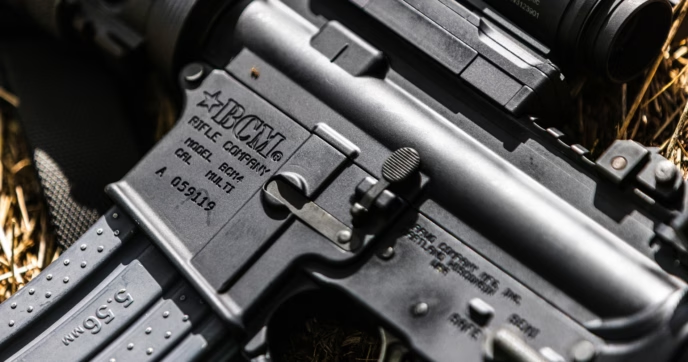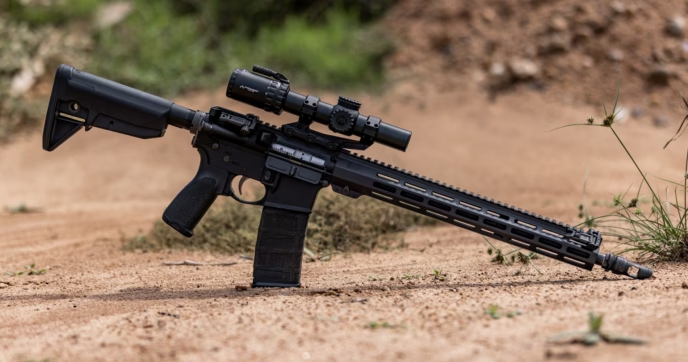Few firearms throughout history are as iconic as the AK-47. Developed in the 1940s, it is still one of the most widely used rifles around the globe, and when looking at the long lifespan of the platform, it’s easy to see how they’ve earned such a legendary reputation.
Still, many often mistakenly believe that the AK has been the same rifle ever since its inception, referring to all AK-pattern rifles as ‘AK-47s’ when this really isn’t the case. Unbeknownst to many, the AK platform has been in a near-constant state of evolution, with it having numerous design updates and variants to make it more suitable for different environments and applications. Today, dozens of AK variants exist, which can make understanding their differences a bit challenging.
To fully understand and appreciate the AK rifle family, it’s critical to look at the platform’s history to see how it has evolved over the years.
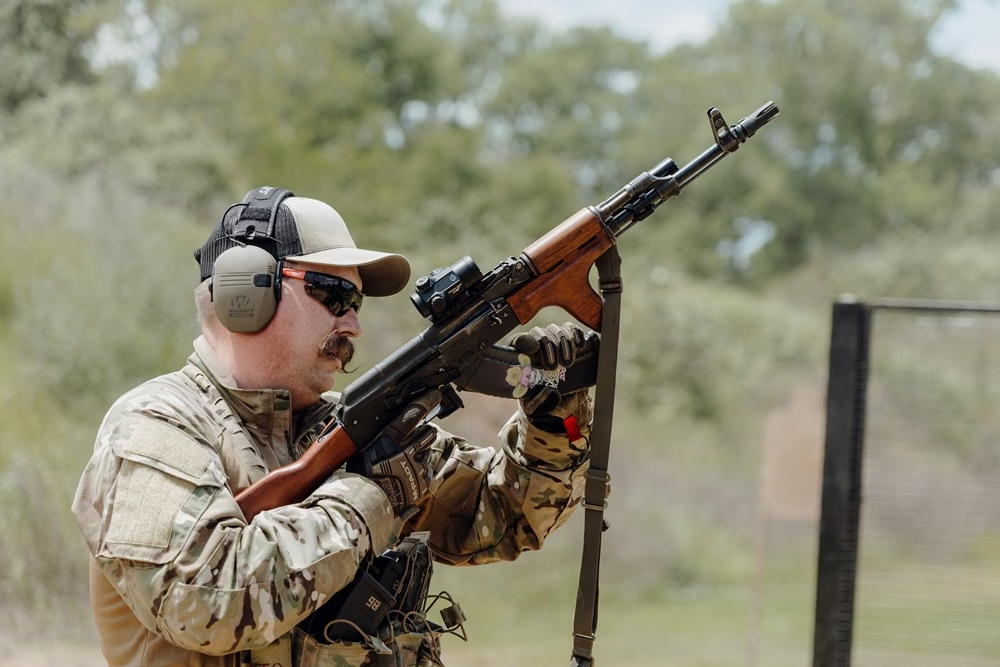
The Original Design: AK-47 and AKM
The Avtomat Kalashnikova series of rifles were developed by Mikhail Kalashnikov in the 1940s towards the end of World War II, when the Russian Military was looking for a new standard issue service rifle that was chambered in 7.62x39mm. During the development and testing of Kalashnikov’s rifle, it excelled in all testing phases, with it being noted particularly for its reliability in harsh conditions. Following its stellar performance, the rifle was chosen for their Military and was designated as the AK-47. Like we mentioned above, most enthusiasts often erroneously call all AK variants an ‘AK-47’, but this term only truly applies to the first production AKs—more specifically, the Type 1, 2, and 3.
Type 1 AK-47
The Type 1 AK-47 is the original Kalashnikov rifle. These rifles used a stamped receiver, and came with a wooden handguard and fixed stock, although there were some models that came the now iconic underfolding AK stock. Produced from 1948 up to 1951, these rifles were used to significant effect, but the production process was often halted because of the complex design of the Type 1’s trunnion and stamped receivers. At the time of their production, Russia didn’t have the infrastructure to reliably produce Type 1 AK-47s to meet demand. Because of this, Kalashnikov started working on a redesigned rifle to streamline the manufacturing process.
Type 2 AK-47
The results of his endeavor culminated into the Type 2 AK-47. Rather than using a stamped receiver, the Type 2 was the first AK variant to use a milled one. This process simplified the manufacturing process, since all the core components, like the front and rear trunnions, could be milled directly into the receiver instead of added in later. These rifles also used a new stock attachment system, and although they were successful, they wouldn’t be produced for very long. And in 1954, the Type 3 would be introduced.
Type 3 AK-47
Type 3 AK-47s were remarkably similar to the Type 2, but they had a refined receiver design that was easier to manufacture, lighter, and housed a more secure stock mounting system. Even further, the Type 3 would be the longest lasting iteration of the original three AK-47 rifles. Still, although it improved on the Type 2’s design, the use of a milled steel receiver made them both expensive and time-consuming to produce, making the Type 3 inefficient from a mass-production standpoint. As such, Kalashnikov started prototyping a newer version of the AK-47.
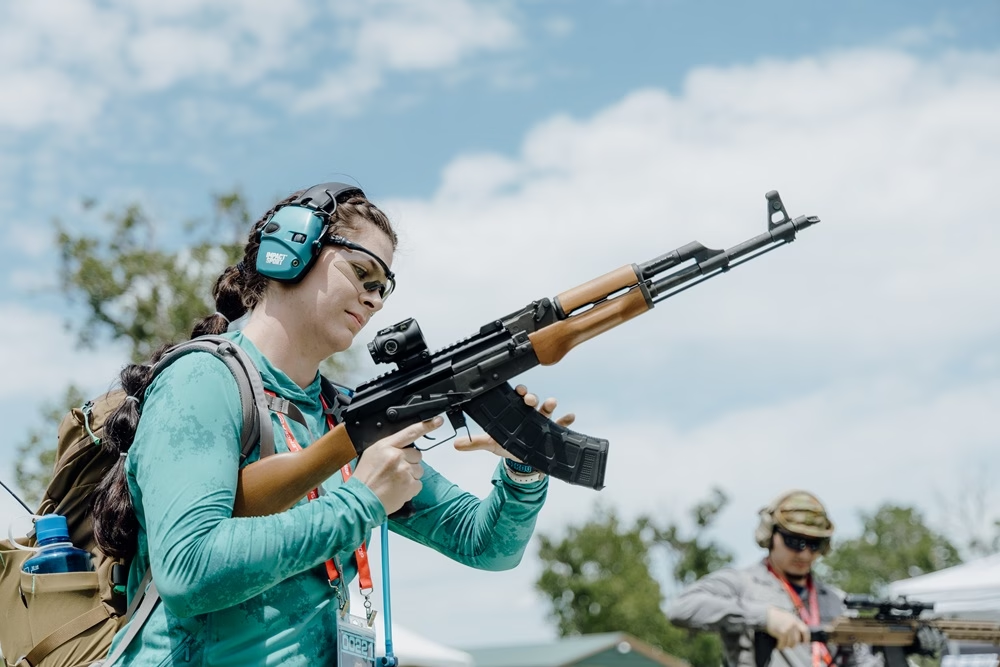
Enter the AKM
In 1959, Mikhail Kalashnikov introduced the AKM, which would be one of the most widely produced rifles in history. The AKM design was a massive refinement of the AK-47 that went back to a stamped receiver design like the Type 1. Even further, compared to the Type 3, the AKM was much lighter and easier to produce, plus, they came with an assortment of upgrades too. Additions such as a slanted AK muzzle brake helped to reduce vertical recoil, while their use of laminated wood for the stock and handguard made them much more durable than previous options—later iterations would incorporate the traditional underfolding stock too.
Much like the earlier AK variants, the AKM was a long-stroke gas piston operated rifle that used a 16.3-inch barrel, 45-degree gas block, and a pinned front sight block at the end of the barrel. Following their adoption by the Soviet military, the AKM was adopted by other nations such as Romania, Yugoslavia (now Serbia), Hungary, and even China, to name a few. Although design variations would arise, most regional AKMs shared the same core design elements.
Today, the AKM still in production by several different manufacturers around the world, including some based in the U.S. too. As such, it’s easily one of the most recognizable and sought-after rifle systems around, with their parts aftermarket nearly rivaling the AR-15’s. We highlight this in our guide on AK-47 upgrades, we recommend checking it out to see what is possible with the platform.
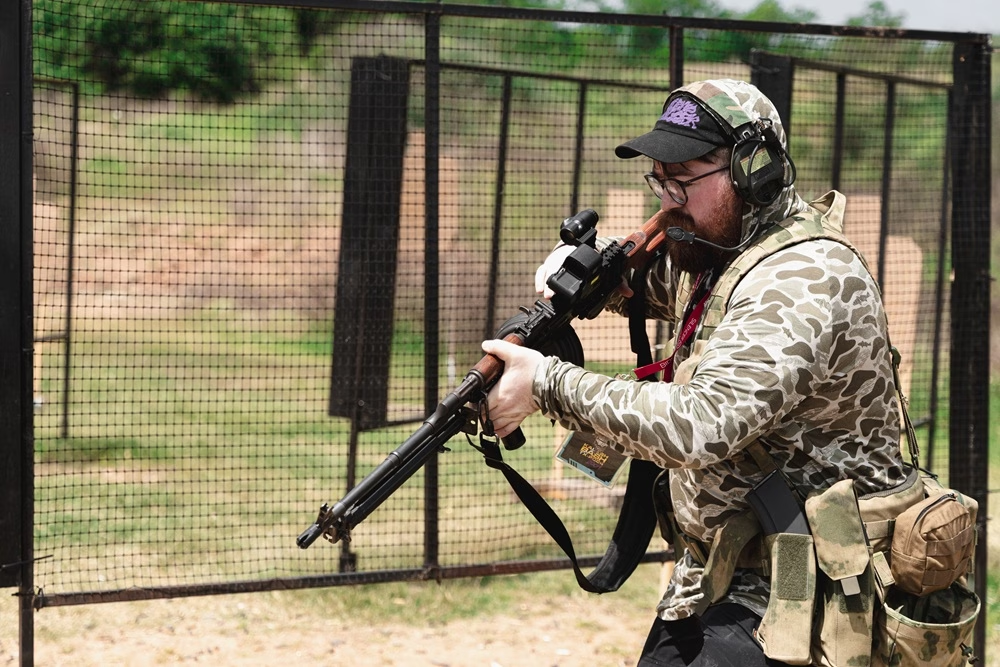
RPK
Shortly after the AKM’s development, Kalashnikov was also working on a light machine gun based on the AK platform known as the RPK. Essentially, it’s a heavily modified version of the AKM. Both firearms share many of the same core components, but the RPK is built around a thicker 1.5mm receiver compared to the AKM’s 1mm receiver. RPKs also use a bulged front trunnion design to provide more structural rigidity to support its 23-inch heavy profile barrel.
By using a thicker receiver, trunnion, and barrel, the RPK is capable of sustaining rapid fire for long periods of time, and to further add to its capabilities, it came with a bipod pinned to the barrel, a more robust stock, and was commonly deployed with either extended 40-round magazines, or a 75-round drum. Much like the AKM, RPKs saw widespread use across the globe, with Russia, Romania, Bulgaria, Yugoslavia/Serbia, and Hungary each fielding their own versions of the platform. Nowadays on the commercial market, the RPK isn’t the most widely available AK variant, but you can still opt for Romanian AES-10B from Century Arms or the Serbian ZPAP M72 from Zastava Arms, which will be available soon.
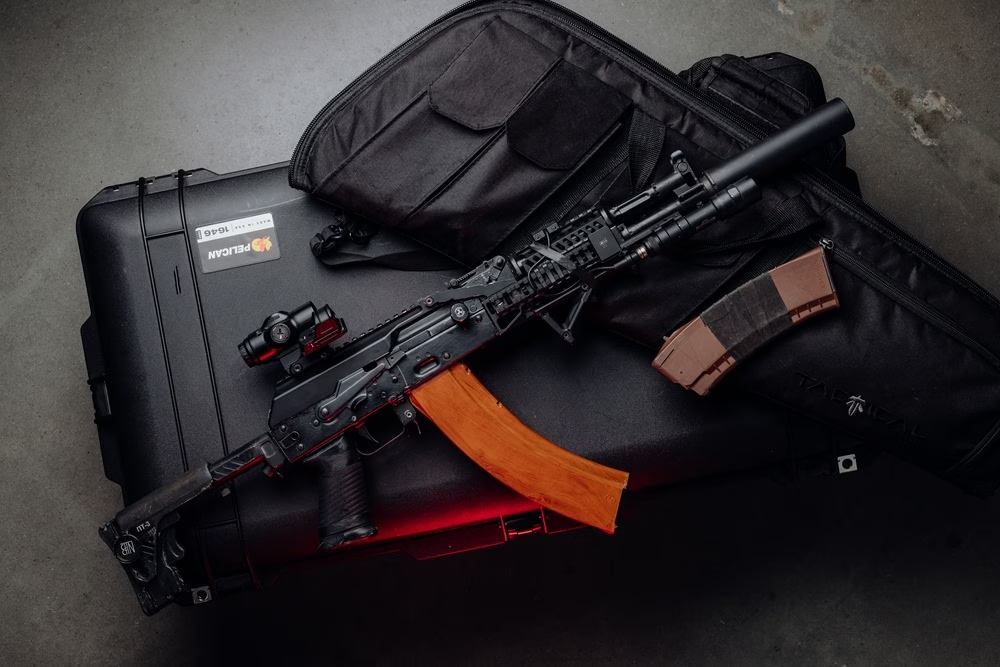
The 5.45 Revolution: AK-74 Family
Historically, the AKM was primarily chambered in 7.62×39. Although it was an effective cartridge, during the Cold War, most nations were switching from larger full-power cartridges like .308 in favor of the smaller intermediate rounds like 5.56 NATO, for example. Not long after this, Russia also began developing a newer cartridge to replace 7.62×39. These trials would result in the creation and adoption of the 5.45x39mm cartridge and the AK-74.
The AK-74 shares a great amount in common with the AKM but has a few key differences that distinguish it. Starting at the muzzle, one of its most noticeable differences is its muzzle device. AK-74 rifles use a threaded front sight post that accepts muzzle devices, while the AKM had a threaded barrel. Attached to it was a larger muzzle brake with two ports to divert gas to reduce its felt recoil. 5.45x39mm is a light recoiling cartridge, like 5.56 NATO, but with the added muzzle brake, the AK-74 has an exceptionally light recoil impulse, making it far easier to control compared to the AKM.
Moving backwards, another notable change from the AKM’s design is the AK-74’s 90-degree gas block, which reduced gas port erosion, and its updated rear sight design to better reflect 5.45’s ballistics. Lastly, the furniture was updated as well. The stocks had a more ergonomic shoulder pad as well as lightening cuts, and instead of using a standard AK handguard the AK-74 used an updated design that included leaf spring in the rear mount for better fitment.
The AK-74 would be adopted and produced in some capacity by several different nations, so like the AKM, there’s a bit of variance in different country’s designs, but they all made use of the 5.45x39mm cartridge.
Today, there aren’t as many AK-74 variants available in the U.S. like there are for the AKM. This is beginning to change as they grow in popularity, but manufacturers have been held back since 5.45×39 ammunition isn’t as easy to find as 7.62x39mm. Most of the manufacturers producing it can no longer export it into the U.S., causing its price per round to increase when it is available. Surplus ammo is often a viable choice when shopping for 5.45, but keep in mind that this ammo is most often corrosive, so you’ll need to clean your rifle thoroughly after use.
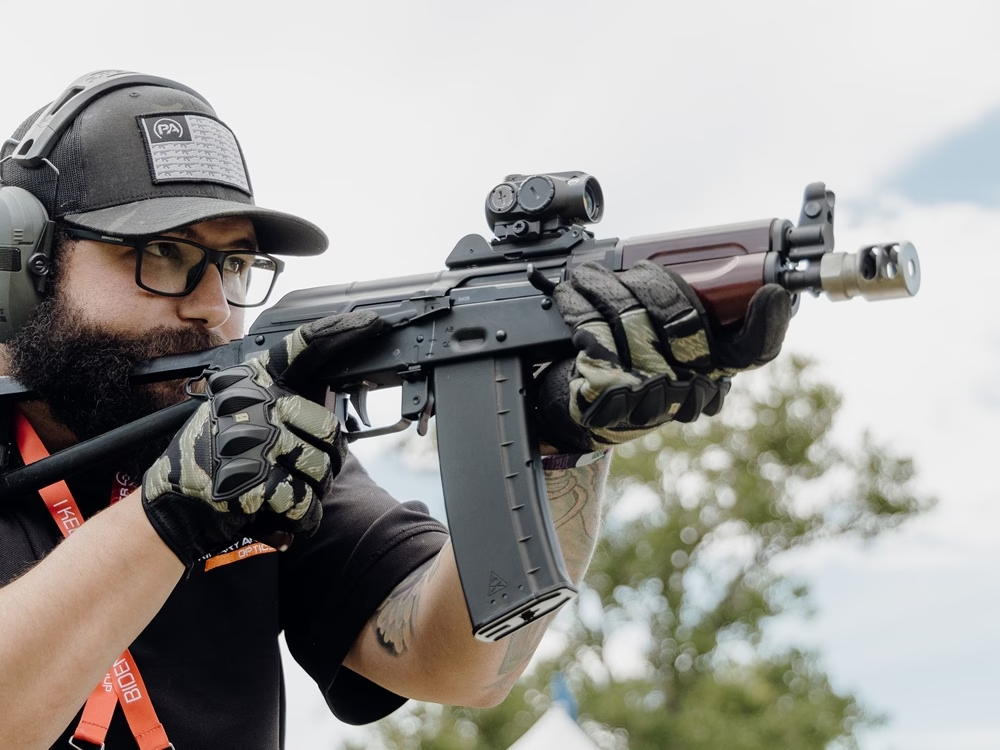
AK-74 Variants
There have been multiple variants of the AK-74 produced over the years, with the AKS-74 being one of the most popular. These rifles were virtually identical to the standard AK-74, but they came with a specialized side-folding stock instead of a fixed one. The rear trunnion featured a push button folding mechanism, and the stock could lock into place by catching onto a latch on the side of the receiver. Made specifically for paratroopers, these rifles could collapse down into a more compact package, making storage much easier.
Shortly after the development of the AKS-74, Kalashnikov created a PDW-style version of it known as the AKS-74U, or Krinkov as it’s better known colloquially. It was created as the need arose for a compact rifle better suited for CQB applications. As such, they were equipped with a significantly shorter 8.1-inch barrel, a sidefolding stock, and a muzzle booster to increase its cyclic rate. With the stock collapsed, they have total length of only 19.3 inches (28.7 inches with the stock extended). As such, they were commonly used by special forces, airborne units, and vehicle crews. Nowadays, they’re still produced by American manufacturers, albeit sparsely, with them usually being available as a type of AK pistol.
Additionally, in 1991, the AK-74M was created to streamline the design and manufacturing process of the AK-74. These rifles used a lighter bolt and carrier design and came with new furniture made from glass filled polymer. They also came standard with folding stocks and used an updated folding stock that was more akin to standard fixed options. Eventually, in 2015, these rifles would be further updated to feature new components that were part of the Russian Ministry of Defense’s Universal Upgrade Kit—which you can think of as the Russian equivalent to USSOCOM’s URGI program to update the M4—but prior to this, the AK-74M would go on to inspire the AK-100 series of rifles.
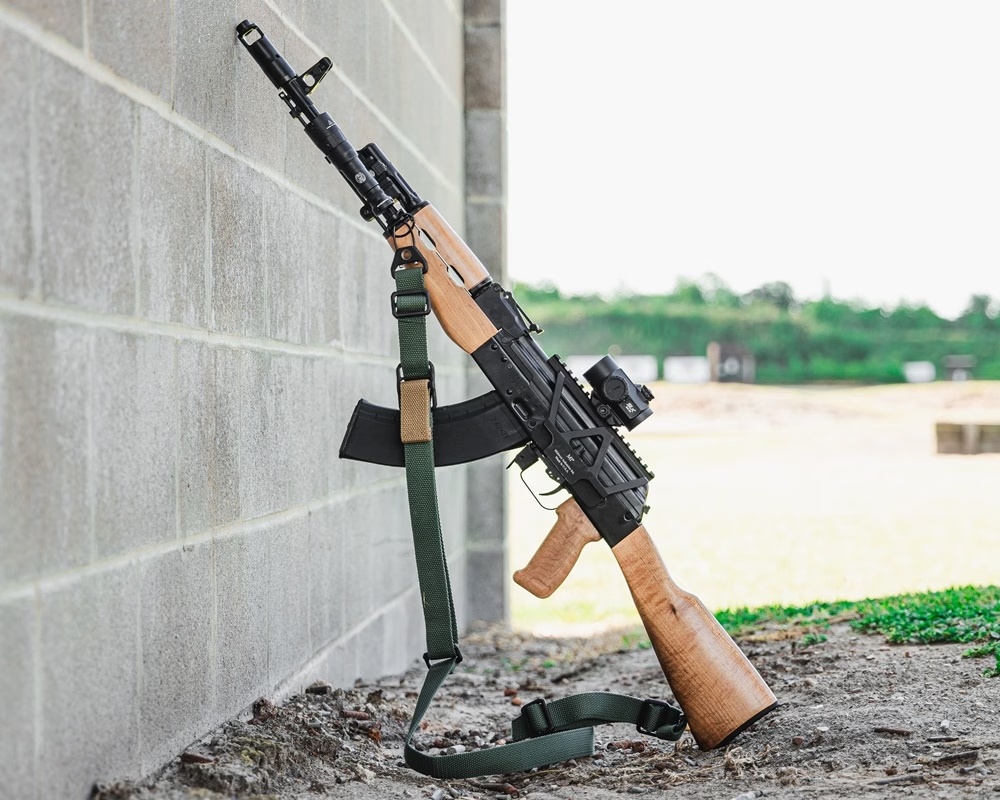
AK-100 Series
Despite the AK-74s widespread use, they weren’t only AK variant fielded by the Russian military. Over the years, rifles like the AKM, AK-74, and AKS-74u were all still in use, and they each used their own respective components. So, to standardize, simplify, and diversify the Kalashnikov lineup for exports and military use, the AK-100 series was created.
Rifles in the AK-100 series utilized the same design as the AK-74M, with each rifle being made with similar components. As such, each rifle used a 24×1.5mm right-handed thread pitch for muzzle devices, a 90-degree gas block, and a side-folding rear trunnion, making production much simpler, while also allowing for greater caliber diversity. Their lineup consisted primarily of six different rifles: the AK-101, AK-102, AK-103, AK-104, AK-74M, and the AK-105.
AK-100 Series Rifles
The AK-101, AK-103, and AK-74M are each full-length rifles outfitted with 16.3-inch barrels, AK-74 style muzzle devices, and side-rails for AK optic mounts. The main distinction between them lies in their calibers. AK-101 rifles are chambered in 5.56 NATO, AK-103s are chambered in 7.62×39, and the AK-74M, as mentioned earlier, is chambered in 5.45×39.
Meanwhile, the AK-102, AK-104, and AK-105 rifles are shortened carbine versions of the rifles mentioned above, coming with 12.4-inch barrels, as well as AKS-74U-style muzzle boosters. These rifles serve as a good middle ground between the ultra-compact Krinkov and full-size Kalashnikov rifles, as they’re long enough to effectively engage targets at further distances, while compact enough to offer optimal maneuverability. Like their full-size counterparts, the AK-102 is chambered in 5.56, the AK-104 in 7.62×39, and the AK-105 in 5.45×39.
Aside from their barrel and gas blocks, nearly all the components found in these rifles are completely interchangeable. Each rifle uses the same gas length, furniture, and they have the same muzzle threads, allowing you to easily configure these rifles with enhanced furniture, upgraded AK pistons, and more. On the civilian market, these rifles have become incredibly popular, with many manufacturers producing their own rifles based on the AK-100 series.
Balanced Recoil System Models
Although they haven’t been used as widely as the rifles mentioned above, it’s worth highlighting the unique design of the AK-107, AK-108, and AK-109 (chambered in 5.45×39, 7.62×39, and 5.56 NATO respectively) and their use of the Balanced Automatics Recoil System. The BARS system works by using two gas pistons, one to cycle the action of the rifle, and another to push a counterweight forward to reduce the rifle’s felt recoil. These rifles haven’t been used as much as the other rifles in the AK-100 series, but the concept has gone on to inspire other rifles from the Eastern bloc.
Other AK Variants
In recent years, the AK has been updated even further, beyond the AK-100 series. Notably, the AK-200 series was introduced in 2018, expanding on the AK-100 series design by utilizing updated furniture, and a locking railed dust cover for mounting AK optics. The handguards have built-in picatinny rail sections for mounting accessories, while the stocks have adjustable lengths of pull as well as adjustable cheek risers.
Lastly, some of the most recent additions to the AK lineup have been the AK-12, AK-15, and AK-19 rifles. These rifles have further modernized the AK platform, with the AK-12 being Russia’s current standard issue rifle. They use an updated rear folding trunnion, and they can also come equipped with an adjustable stock like the AR-15, though they can also come with AK-200 style folding stocks as well. Additionally, the gas tube isn’t removable like it is on other AK variants—it’s welded in place, but it does have a plug built into it that can be opened for cleaning. Lastly, the muzzle device has been updated and now features a quick detach mechanism as well as a glass breaker built into the front of it.

U.S. AK Market
In the U.S., the AK has long been a favorite amongst enthusiasts, with the platform being used for everything from recreational and competitive shooting disciplines, to even hunting and defense. However, compared to rifles like the AR-15, there aren’t as many AK options to choose from considering they’ve been in production for decades in multiple countries.
Prior to the 1980s and 1990s, it was common to see a wide variety of AK pattern rifles being imported into the United States. These rifles came from several manufacturers in different countries including Russia, Bulgaria, Hungary, China, and more. However, in the late 1980s and mid 1990s, restrictions and sanctions were put in place regarding manufacturers in various countries such as Russia and China, which seriously limited the number of options to choose from. As the years have gone by, this has begun to change, albeit slowly.
As we mentioned throughout this article, several U.S. based manufacturers have begun building their own AK variants since there aren’t as many imported models available. Brands like Century Arms, Texas Weapon Systems, and many more, produce an assortment of AK-pattern rifles using primarily American-made components. Also, imported AK models aren’t entirely off the table. Models like the WASR-10—which are made in the Cugir Arms Factory in Romania—are still imported by Century Arms. Similarly, Zastava Arms continues to import their Serbian made ZPAP rifles through their U.S.-based subsidiary Zastava USA. So, if you’re looking for a high-quality AK, you still have several to pick from.
Conclusion
Since its inception in the late 1940s, the Kalashnikov rifle family has come a long way, cementing their legacy as some of the most iconic rifles ever produced. Still, the history of this rifle system often gets overlooked by most enthusiasts.
The revolutionary design of the original Type 1, 2, and 3 AK-47s paved the way for the AKM, which would go on to be one of the most widely produced rifles ever designed, as well as one of the most popular rifle systems in the present day. However, its evolution didn’t end here. The AK-74 and AK-100 series continued to refine and modernize the platform, with them being widely considered as some of the most well-regarded firearms ever designed.
Through decades of evolution, AK pattern rifles are easily recognizable, and their reputation for their rugged reliability and adaptability often precedes them. As such, they continue to remain as a top choice amongst enthusiasts, and with their modern refinements and growing parts aftermarket, they won’t be going away anytime soon.
If you’re considering adding an AK to your collection, check out our guide explaining the parts of an AK-47 for an in-depth look on the rifle’s core components and functionality.
